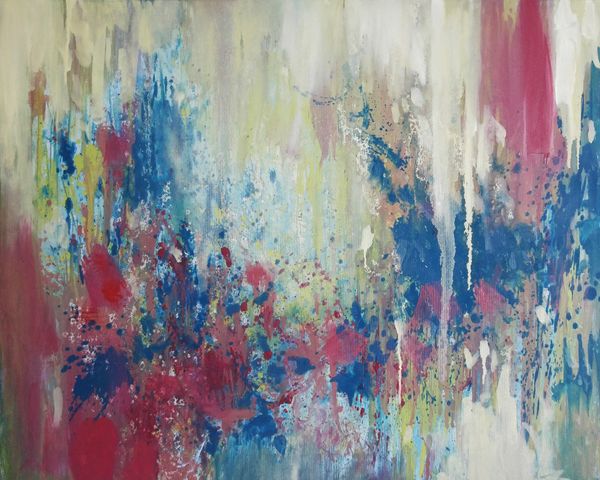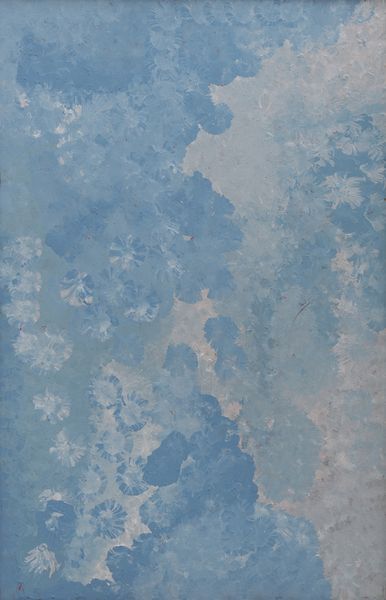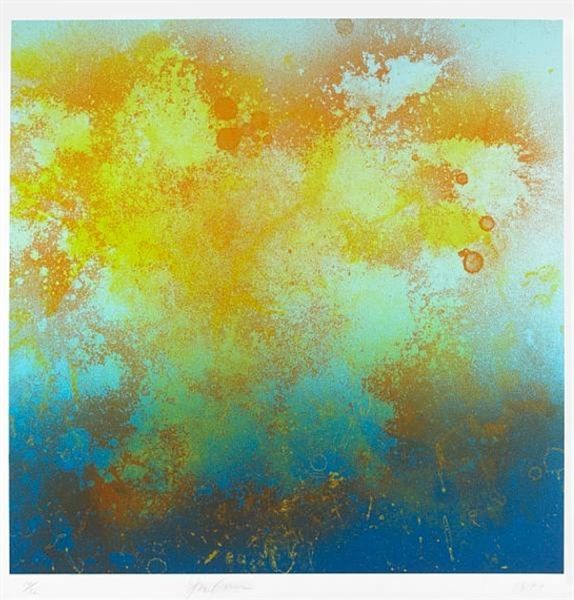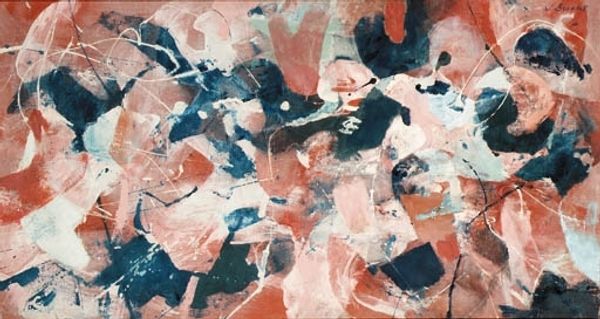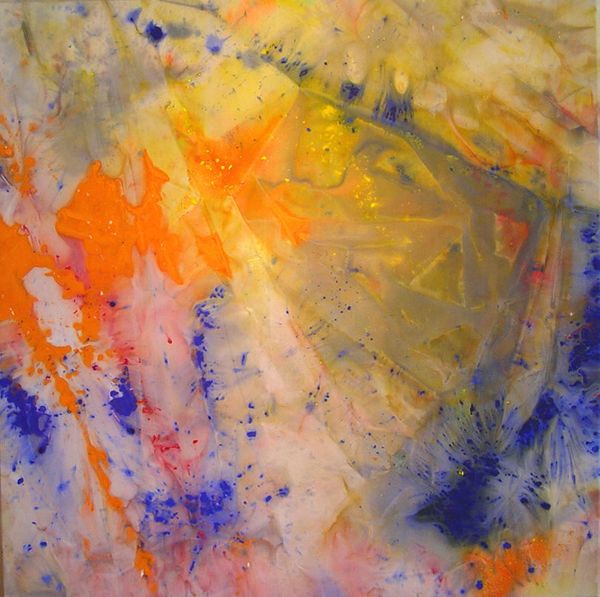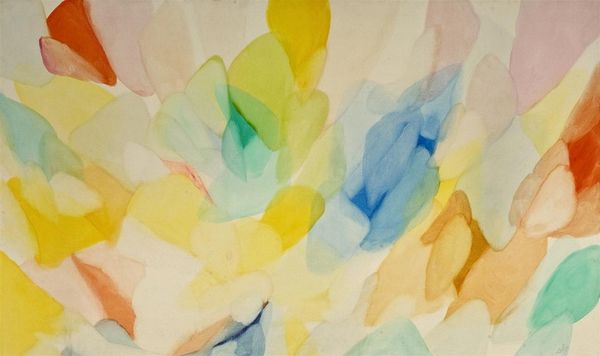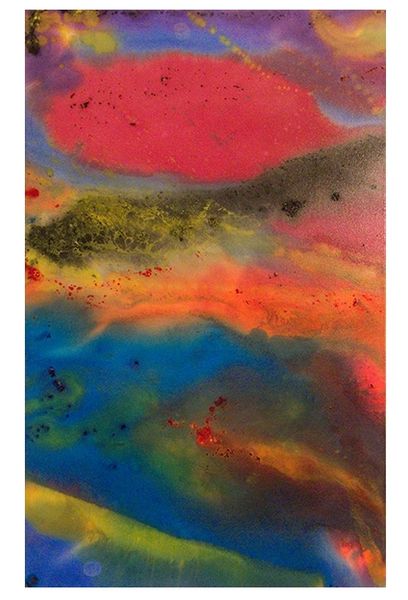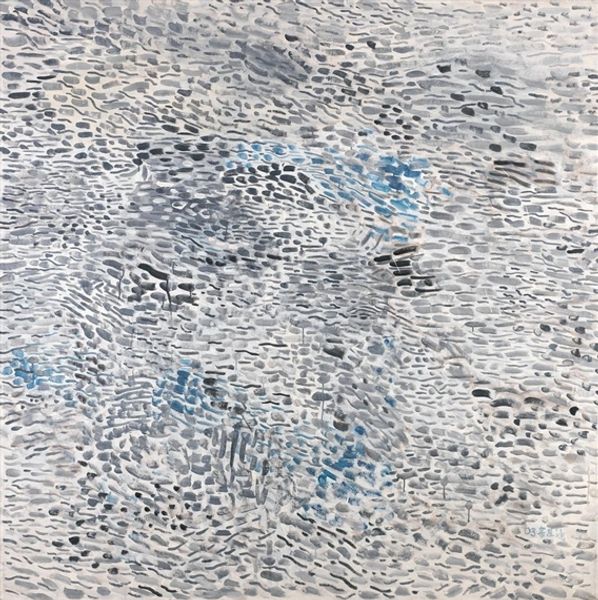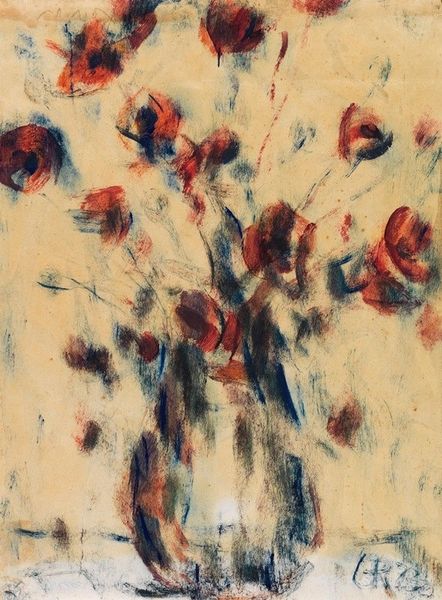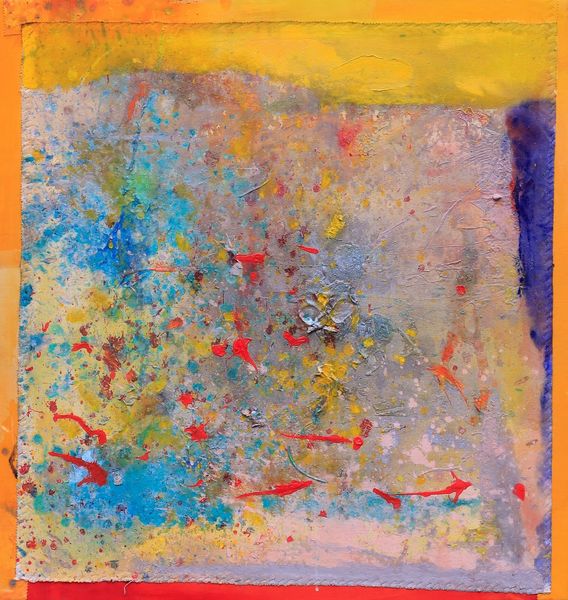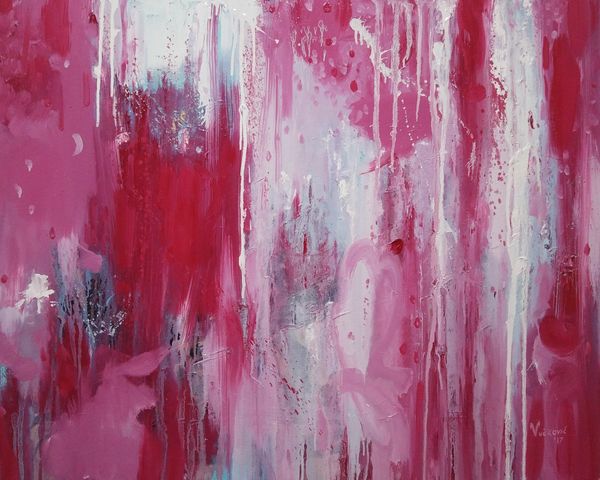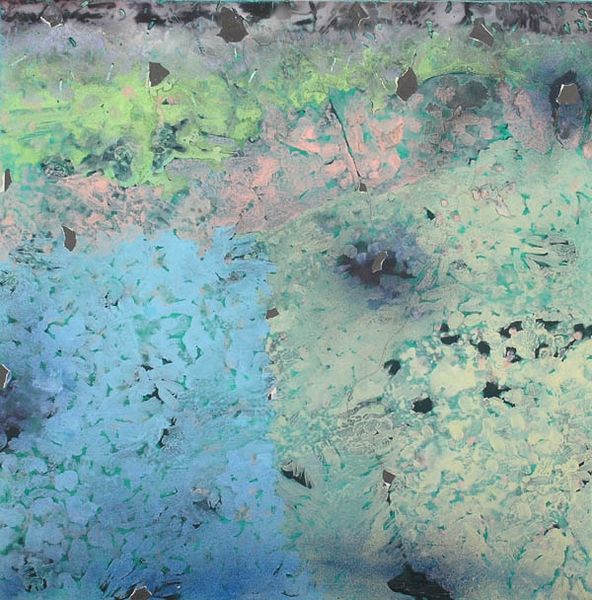
Copyright: Xu Hongming,Fair Use
Curator: Standing before us is Xu Hongming's "作品008," created in 2004. It's a watercolor and stain piece, decidedly abstract. Editor: Immediately, I'm struck by the softness of it. It evokes a sense of ephemerality, like memories fading or distant clouds dissolving. The palette is gentle, though the dark smudges introduce a somber element. Curator: The stain medium lends itself to that ephemerality, wouldn't you agree? There's a surrender of control; the pigment interacts directly with the support, almost without the artist's intervention, leaving indexical traces on the canvas. It reminds me a bit of Morris Louis. Editor: Exactly. I think about the practical process: the artist applying these washes, layer upon layer, coaxing those blurred forms to emerge. And the relationship of that process to Eastern ink wash techniques; such a connection emphasizes a certain meditative state on the artist's behalf. Was there any kind of commentary or artistic statements from Xu concerning his creative methods that would relate to process and the materiality of Eastern artistic tradition? Curator: Indeed. There's a visible conversation with Abstract Expressionism in its overall gesture and scale, even in its deliberate mark-making. One cannot overlook that his exploration into materiality reveals a keen self-awareness concerning the legacy of ink wash traditions while operating within an art market increasingly governed by global influences and exchanges. The title too seems carefully chosen, merely numbering the piece as a gesture of modesty. Editor: I find it compelling that the abstraction can offer us access to feeling, yet also prompts us to think deeply about what informs the materials' application—the actions performed and their associated cultural meanings that helped the art become what it is. I'm also keen to know where Xu sourced their pigment, as it looks almost manufactured from nature. Curator: Indeed, understanding the artist's position within various art historical trajectories—both Eastern and Western—enhances our appreciation, providing layers of meaning beyond a purely sensory encounter. Editor: Absolutely. And considering those choices of medium and action situates the art within a much wider network of historical relations. It also lets me know, from one point of view, how it performs its visual identity as the unique abstract gesture it is. Thank you for expanding my viewpoint with formal insight, Curator.
Comments
No comments
Be the first to comment and join the conversation on the ultimate creative platform.

